All official European Union website addresses are in the europa.eu domain.
See all EU institutions and bodiesWhen we think about forestry, we tend to imagine an activity which takes place largely across extensive rural landscapes. However, in an era of rapid urbanisation, trees and woodlands are also increasingly valued as integral components of our towns and cityscapes. It is anticipated that by 2050, Europe’s level of urbanisation will reach almost 84% requiring innovative solutions to the urgent challenges posed by development pressure, urban heat, atmospheric pollution, biodiversity loss and the growing demand for greenspaces for sustained health and wellbeing. In addition to enriching the fabric of our towns and cities, urban forests and trees can provide valuable Nature-based Solutions (NbS) which deliver a range of goods and ecosystem services, including climate regulation. Urban Forests can contribute to the creation of greener, healthier, more resilient and liveable cities.
What is urban forestry?
In simple terms, urban forests have been defined as communities of trees and associated vegetation in urban areas . They have been further described as tree-based urban ecosystems comprising all woodlands, groups of trees and individual trees located in urban and peri-urban areas. To articulate the management of these green assets, the term “urban forestry” has been widely adopted. This concept was originally proposed by Prof. Erik Jorgensen from the University of Toronto as early as 1965, and changed the previous emphasis upon individual trees, or urban arboriculture, to a more holistic view of the urban forest. An illustrative transect showing the spatial characteristics of the urban forest (from urban periphery to the city centre) is shown in Figure 2.

Figure 2. Components of the Urban Forest (source: adapted from Owuor et al., 2022)
In more recent years, a simple typology of urban forests has emerged [3] which identifies five key types: i) peri-urban forests, ii) city parks and urban forests (> 0.5 ha), iii) pocket parks and gardens with trees (< 0.5 ha), iv) trees on streets and public squares, and v) other green spaces such as botanical gardens, urban agricultural plots or riverbanks (see Figure 3). Overall, the woodland aspect of urban forestry, including more extensive areas of peri-urban forest, is considered as a key component which delivers the greatest range of ecosystem services including connectivity for biodiversity, recreation and human health benefits. A defining characteristic of urban forestry is its multifunctionality. Significantly, urban forestry involves an integrated, interdisciplinary, participatory and strategic approach to planning and managing tree resources in urban areas for their economic, environmental and sociocultural benefits.
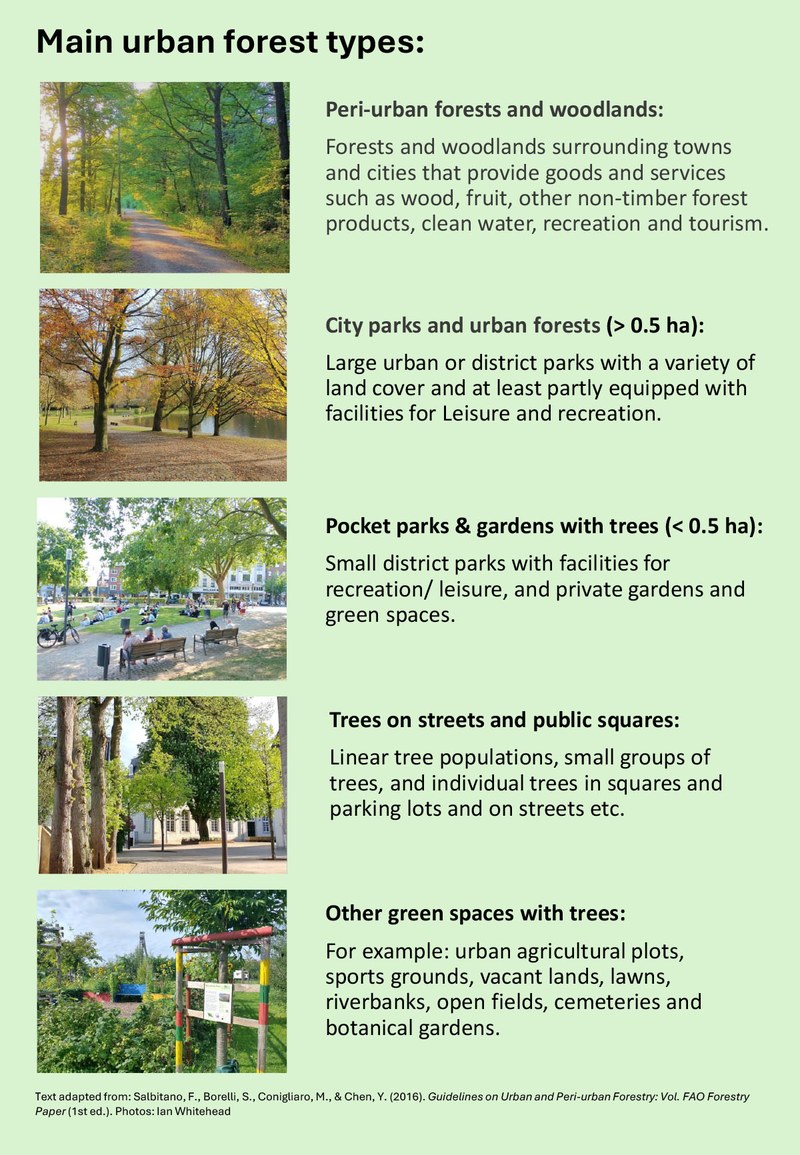
Figure 3. Main types of urban forest (photos: Ian Whitehead)
Development of urban forestry as a professional discipline and as a research field
Urban forestry is still relatively young as a defined field within its own right. It has seen rapid growth over the years and in terms of policy, practice, research and education and is now a globally recognised professional discipline. Parallel with the growth of urban forestry as a profession, a number of review papers have recently also highlighted the increasing interest in urban forestry, as a research field. North America and Europe have played a key role as pioneers in urban forestry research, whilst more recently, China has produced an increasing number of publications on the topic.
Integration with urban planning, sustainability and urban greening agendas
Given its interdisciplinary nature, urban forestry offers the potential to contribute to the delivery of integrated international and European policy objectives, such as the UN’s 2016 New Urban Agenda, the EU Green Deal, the EU 2030 Biodiversity Strategy and the Forestry Strategy. The EU Biodiversity Strategy, for example, calls for the planting of at least 3 billion additional trees by 2030 with cities being considered as being an important focal point for this action, .
The adoption of the EU Nature Restoration Regulation (NRR) (EU) 2024/1991 should further support urban forestry as part of a wider urban nature agenda. Article 8 of the NRR on Restoration of Urban Ecosystems requires: i) no net loss of urban green spaces and tree canopies by 2030; ii) that from 2031 there should be an increase in urban green spaces every six years, and; iii) the integration of green spaces into buildings and infrastructure (significantly, the increase in green space should be towards a “satisfactory level”, though this is still to be defined by member states).
Additionally, Article 13 of the NRR requires Member States to contribute to the commitment of planting at least three billion additional trees by 2030 at Union level with the increase of urban green space as a key element of this effort. Work is also under way on the development of a proposal for a Soil Monitoring Regulation, whereby trees would not be considered as land take and the planting of trees in the city would be considered as “reverse land take”.
The Nature Restoration Regulation further compliments the implementation of the Biodiversity Strategy 2030, which specifies that cities with over 20,000 inhabitants should draw up ambitious Urban Nature Plans (UNPs). Urban Nature Plans are strategic frameworks which formalise a city’s commitment to promoting biodiversity and urban nature. They create a multi-scale framework which helps authorities to integrate existing policies, measures and strategies related to biodiversity and urban greening across different departments and sector.
Balancing biodiversity, species, functional traits and resilience challenges
As a consequence of climate change, higher urban temperatures, drought conditions and extreme weather events are all exerting additional stress upon urban tree populations. This is resulting in increased levels of disturbance and exposure to pests and diseases, as well as an increased risk of wildfires. Combined with sometimes poor management practices, climate change is significantly affecting the health and mortality rates of common urban tree species. It is therefore important to develop robust urban forestry practices which factor-in climate adaptation and which increase the overall resilience of the urban tree stock.
Traditionally, arboriculturists have relied upon a limited range of key tree species, often originating from a narrow genetic pool, , for use in amenity planting schemes in parks, gardens and streets. Species are often selected on the basis of specific attributes, such as ease of establishment, visual appeal, canopy cover or overall ease of care and management. Long established aesthetic concepts, such as regimented avenues of trees in city parks, have further promoted uniformity and thus reduced the overall diversity and resilience of the tree stock. Analyses of urban tree inventories worldwide shows the problem of overplanting of certain key species still exists in many cities, with the average abundance of the most common species being about 20% worldwide, while being over 40% in some cities .

Figure 4. Urban trees (such as these in Bonn, Germany) can help cities adapt to extreme heat and extreme weather. Increasing species and structural diversity can also further enhance the future resilience of the urban forest (photo: Ian Whitehead).
The limited range of species planted by municipalities has often resulted in low biodiversity benefits, a lack of structural diversity and an even age-class distribution. Significantly, such approaches lack resilience and are inherently more susceptible to collapse due to increasing risks from climatic stress, pests and tree diseases such as Ash Dieback (Hymenoscyphus fraxineus), Acute Oak Decline, Dutch Elm Disease (Ophiostoma novo-ulmi) and European Spruce Bark Beetle (Ips typographus)
By contrast, the latest advances in functional ecology provide solutions which minimise the risk of catastrophic urban tree mortality caused by uncertain future climatic conditions. The single best strategy for maintaining the resilience and range of benefits provided by urban trees is to increase their diversity, based upon functional and species traits,.
EU Guidelines on Biodiversity-Friendly Afforestation, Reforestation and Tree Planting for Urban Areas emphasise the importance of increased use of native species within urban forestry schemes where possible, whilst increasing the overall diversity of tree species and the structural diversity of urban woodlands themselves using “closer to nature” approaches. These concepts are being very much put into practice across a number of European cities, such as Paris, which has set ambitious targets in their Local Biodiversity Action Plan to utilise 50% of native species in urban greening schemes. Greenspace managers in Paris also consider the potential adaptability of individual species to cope with future climate scenarios; in this respect, some species will prove more resilient than others in the face of uncertain future conditions.
Overall, though, greater structural and species diversity will remain key considerations for maintaining future resilience within urban forests. In addition to this, the importance of intraspecific variation (genetic and phenotypic diversity) needs to be better acknowledged in this context, since poor matching of trees and the local climate and growing conditions can lead to extensive loss of valuable trees. By using the right genetic plant material for the challenging urban environments, a more resilient tree population with a greater diversity and higher capacity for delivering ecosystem services can be gained.
Evaluating the status of urban forestry
A key challenge posed by the integration of urban forestry within an ever-broadening urban policy agenda, is the need for evidence-based data and monitoring of the diverse sustainability outputs. Within the broader context of Urban Nature Plans, this is being explored through the adoption of indicators proposed in the NBS Handbook, “Evaluating the Impact of Nature-based Solutions: A Handbook for Practitioners”. However, indicators need to be carefully selected, both for their relevance and their practicality. This discussion is of particular policy relevance in the framework of the Nature Restoration Regulation which requires to define “satisfactory level” of urban green space and urban tree cover that would become a target. The Urban Nature Plan process and urban forestry policies also place a strong emphasis upon social justice and equity themes, requiring targeted indicators to evaluate participatory planning and governance. These include, for example, the involvement of diverse stakeholder groups, civil society participation, transparent decision-making processes and reducing potential disservices such as green gentrification (green gentrification occurs when greenspace enhancements improve the environmental quality of neighbourhoods but consequently increase property prices. This can lead to exclusion of existing residents, who can no longer afford to live there).
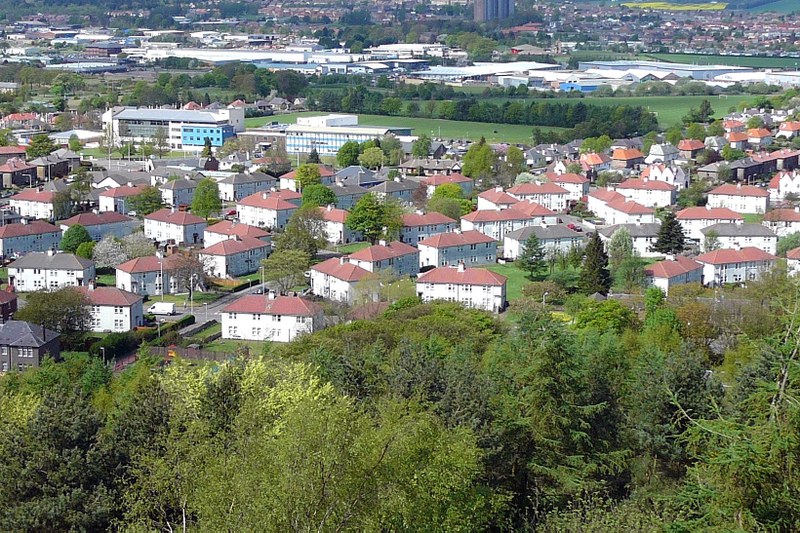
Figure 5. Planting more trees in residential areas (such as shown here in Dundee, Scotland) can increase overall canopy cover but can also present risks of gentrification in some instances (photo: Ian Whitehead)
Indicators which are clearly communicable and accessible stand a greater likelihood of adoption by policymakers. In this respect, the 3-30-300 Rule is one example of an urban forestry metric which has been gaining traction internationally. The Rule sets out minimum standards for access to nature in cities for human wellbeing. It specifies that homes, schools and workplaces should have a view of 3 trees, should be in a neighbourhood with over 30% tree canopy cover and within 300 m walk of a park, , . Whilst appearing initially as a simple rule of thumb, in reality, this metric is an important evidence-based tool for assessing urban nature. Significantly, it is easy to understand, adaptable to local context and sets a simple benchmark for green infrastructure (see figure 6.).
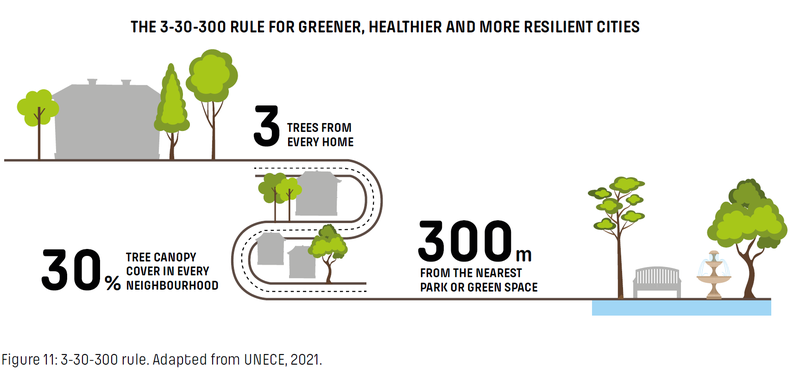
Figure 6. The 3-30-300 rule (source: Owuor et al., 2022 (adapted from UNECE, 2021))
Recent research has tested the 3-30-300 rule through international comparison across major cities. For example, datasets from over 2.5 million buildings in eight cities across the globe (Amsterdam, Buenos Aires, Seattle, Denver, New York, Singapore, Melbourne and Sydney), have revealed that most buildings fail the 3-30-300 rule due to inadequate tree canopy. Whilst the ‘3’ standard is often met, existing trees are frequently too small to ensure 30% canopy cover is achieved. Furthermore, achievement of the ‘300’ standard has also been variable.
Ecosystem services and disservices
The valuation of ecosystem services is also an increasingly important mechanism for monitoring and evaluating the impact and benefits of urban forestry. The ecosystem services provided by urban forests are diverse; from maintaining biodiversity, regulating air quality, the provision of forest products to human health and well-being.
Recent research carried out in Oslomarka (a large area of urban and peri-urban forest in the Oslo Municipality in Norway), shows mounting evidence regarding the societal importance of urban and peri-urban forests and their contribution to human well-being through delivery of diverse ecosystem services:
In Oslomarka, ecosystem services are the result of combined ecological, socio-cultural and economic factors. These include species and biophysical elements but also reflect the history, culture, and governance of the forest. Data suggests that major changes in ecosystem services in the forest respond to changes in technology, policy and regulations more than to environmental changes. Institutional, technological and cultural changes are therefore considered as key drivers shaping forest use and the delivery of ecosystem services.
Oslo’s urban and peri-urban forests provide a wide range of valuable ecosystem services to the local population. For example, the forest is used by 86% of the City’s residents for recreational purposes and the territory provides the water supply for the entire Municipality. Research has also identified the provision of many other ecosystem services, from food and raw materials to contributing to sense of place. While provisioning and habitat services have declined over the past fifty years, climate regulation benefits have increased. The Oslo example highlights the key role of urban and peri-urban forests for providing cultural ecosystem services. Meanwhile, observed declines in provisioning services can be seen to be the outcome of forest policy which emphasises conservation and recreational purposes. However, the decline in old growth forest illustrates the need for stronger policy efforts to enhance habitat quality.
As with many European cities, an increasing urban population density places a greater importance on the role of the urban forest to provide health and wellbeing benefits to citizens and visitors. Maintaining these forests for human-nature interactions and delivery of vital ecosystem services is of critical importance. Overall, there is increasing evidence on the importance of maintaining and sustainably managing urban and peri-urban forests to sustain and enhance quality of life in cities.
In the context of increasing heatwave frequency, urban forests and their localised cooling effects are regarded as an essential approach for limiting the impact of extreme temperatures upon the urban population. To tackle the issues of heat and increase the benefits of trees, cities such as Barcelona have designed strategies to develop urban forests
The limitations and challenges for urban forestry
Whilst urban forests provide a wide range of benefits, there can also be negative impacts or ecosystem “disservices”, . Some of the most common ecosystem disservices arising from urban forests and trees include:
- Health and safety impacts: such as tree pollen allergies, dermatitis, avian influenza transmitted by migratory birds and poisoning by ingestion. Physical injuries from falling trees or tree parts during storms.
- Mobility and infrastructure: Some trees have strong and extensive root systems which can damage buildings, underground services and pavements.
- Financial: There are direct costs related to forest management (e.g., removing fallen trees and branches, clean-up, damage, repairs).
- Illicit activities: Vegetation can evoke fear that it provides a space for marginalised, stigmatised or criminal behaviour.
- Aesthetics: Some people consider “wild areas” to be unsightly and unmanaged.
- Environmental: Pollution and energy use are associated with management activities.
- Gentrification and inequality: There are also potential negative effects of increasing property value.
- Wild fires: urban forests are prone to fires creating additional risk to urban settlements. Therefore, selecting less fire-prone species is desirable.
Other disservices include habitat competition with humans due to an increase in the populations of wild animals, insects or invasive plant species. In recent years there have been concerns about the increase in wild boar and carnivore populations (e.g. wolves, bears) across parts of Europe and perceived risks that this could create for people. Wild boar, for example, are routinely seen in urban parks in large cities such as Berlin. Similarly, non-native plant species such as Japanese knotweed can quickly become established and spread through woodlands.
Despite this, the benefits of urban forestry generally outweigh the negative aspects. It is important, however, to understand and quantify the benefits that urban forestry delivers, both to justify future investments and to finetune the management of urban trees and forests. The quantification of ecosystem benefits and disservices can be supported through detailed empirical data. Increasingly, assessment tools are being utilised for this purpose, particularly with regard to regulatory ecosystem services. Two of the most popular tools in use for this purpose are i -Tree Eco and remote sensing, both of which have been developed independently but which offer significant potential for integration. Whilst both approaches primarily focus on regulatory services, remote sensing offers more versatile tools for assessing a broader range of ecosystem services beyond i-Tree's standard scope. Remote sensing holds potential to compliment i-Tree data by providing structural and location-specific information at scale. For example, studies have shown that LiDAR data reliably derives tree height and crown width, and in combination with multispectral and hyperspectral imagery, it can enhance species identification enabling complex analysis of urban forest structure and the ecosystem services this provides.
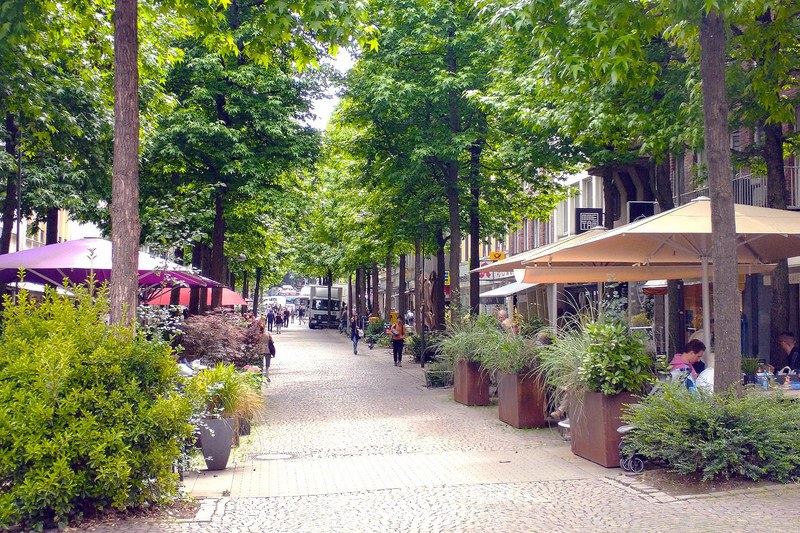
Figure 7. Example of a dense tree canopy in an urban neighbourhood (in Aachen, Gemany), providing multiple ecosystem services for city dwellers (photo: Ian Whitehead).
Urban forestry: an integral component of our future cities
Urban forestry is becoming ever more significant for its role in delivering nature-based solutions to address numerous challenges such as increasing development pressure, urban heat island impacts, atmospheric pollution, biodiversity loss and the growing demand for greenspace for the health and wellbeing of city dwellers.
It is both an emerging professional discipline and a research field of increasing importance. The interdisciplinary nature of urban forestry means that it can provide multiple benefits and solutions to diverse societal problems. However, the cross-cutting nature of urban forestry also creates challenges with the full range of benefits delivered often difficult to quantify and measure. Although urban forestry comes at a cost the benefits generally outweigh any disservices.
In addition, urban forestry falls across a number of different policy areas, making it harder to achieve the status or funding priority accorded to more traditional forms of rural forestry, which are financed through EU Rural Development budgets. To address this situation the EU has recently produced a financing guide within the project of the European Commission, DG Environment ‘Support for implementing the 3 Billion Trees Pledge’. Funding is also available via the LIFE Programme for Urban Green Transition The main objective of the financing guide is to provide information to stakeholders interested in finding (additional) funding sources for their tree planting initiatives and, potentially, in being registered in the EU tree counter devoted to the EU pledge (access the Funding Guide here: Funding-Guide-Final.pdf )
Increasing integration of urban forestry with the wider urban greening agenda seems likely, with urban forestry contributing significantly as a key component of green infrastructure. However, unlocking the full potential of urban forestry requires better access to resources, policy prioritisation, strong civic leadership and effective tools to guide policymakers and practitioners.
Climate change and the biodiversity crises also create huge challenges for the management of our urban ecosystems, including urban forests, requiring the need for innovative approaches. These include “closer to nature” forest management practices and the requirement to adapt to changing conditions through more structurally diverse, species rich urban forests which benefit both nature and people.
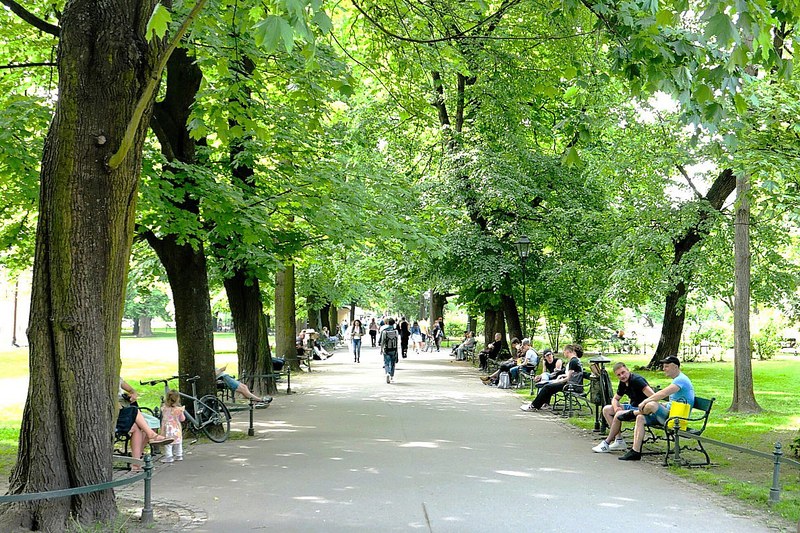
Figure 8. Chilling out (in Krakow, Poland) - enjoying a shady spot in the city centre park (photo: Ian Whitehead)
- ↵European Commission, “Competence Centre on Foresight, Urbanisation in Europe,” https://knowledge4policy.ec.europa.eu/foresight/topic/continuing-urbanisation/urbanisation-europe_en.
- C. Konijnendijk, K. Nilsson, T. Randrup, and J. Schipperijn, Urban Forests and Trees. Berlin, Heidelberg: Springer Berlin Heidelberg, 2005. doi: 10.1007/3-540-27684-X.↵
- F. Salbitano, S. Borelli, M. Conigliaro, and Y. Chen, Guidelines on Urban and Peri-urban Forestry, 1st ed., vol. FAO Forestry Paper. 2016.↵
- Y. Guo and W. Y. Chen, “Two decades of Urban Forestry & Urban Greening: Taking stock and looking forward,” Urban For Urban Green, vol. 104, p. 128601, Feb. 2025, doi: 10.1016/j.ufug.2024.128601.a b c
- H. D. Gerhold, “Origins of Urban Forestry,” in Urban and Community Forestry in the Northeast, Dordrecht: Springer Netherlands, 2007, pp. 1–23. doi: 10.1007/978-1-4020-4289-8_1.↵
- J. Vogt, B. C. Fischer, and R. J. Hauer, “Urban forestry and arboriculture as interdisciplinary environmental science: importance and incorporation of other disciplines,” J Environ Stud Sci, vol. 6, no. 2, pp. 371–386, Jun. 2016, doi: 10.1007/s13412-015-0309-x.↵
- ↵FAO, “Urban and Peri-urban Forestry. Definition.,” https://www.fao.org/forestry-fao/urbanforestry/87025/en/.
- K. O’Herrin, C. G. Bassett, S. D. Day, P. D. Ries, and P. E. Wiseman, “Borrowed Credentials and Surrogate Professional Societies: A Critical Analysis of the Urban Forestry Profession,” Arboric Urban For, vol. 49, no. 3, pp. 107–136, May 2023, doi: 10.48044/jauf.2023.009.↵
- J. A. Owuor, I. Whitehead, and R. De Vreese, Unlocking the Potential of Urban Forests: Developing a Local Urban Forestry Plan, Deliverable 3.4., vol. Erasmus+ Uforest. 2022.a b c
- Publications Office of the European Union, “Three Billion Additional Trees by 2030 - 3 Billion Trees Pledge Financing Guide,” Luxembourg, 2024.a b
- a bEuropean Union, “Nature Restoration Regulation,” https://environment.ec.europa.eu/topics/nature-and-biodiversity/nature-restoration-regulation_en.
- European Commission, “Directive of the European Parliament and of the Council on Soil Monitoring and Resilience (Soil Monitoring Law),” Brussels, COM(2023) 416 final 2023/0232(COD), 2023.↵
- a bDirectorate-General for Environment (European Commission), “Urban nature plans - Guidance for cities to help prepare an urban nature plan,” https://op.europa.eu/en/publication-detail/-/publication/bdb452c0-901c-11ef-a130-01aa75ed71a1/language-en.
- E. Franceschi et al., “Urban environment, drought events and climate change strongly affect the growth of common urban tree species in a temperate city,” Urban For Urban Green, vol. 88, p. 128083, Oct. 2023, doi: 10.1016/j.ufug.2023.128083.↵
- V. I. Lohr, D. Kendal, and C. Dobbs, “Urban trees worldwide have low species and genetic diversity, posing high risks of tree loss as stresses from climate change increase,” Acta Hortic, no. 1108, pp. 263–270, Feb. 2016, doi: 10.17660/ActaHortic.2016.1108.34.↵
- H. Sjöman et al., “Resilient trees for urban environments: The importance of intraspecific variation,” PLANTS, PEOPLE, PLANET, vol. 6, no. 6, pp. 1180–1189, Nov. 2024, doi: 10.1002/ppp3.10518.a b
- A. Paquette, R. Sousa-Silva, F. Maure, E. Cameron, M. Belluau, and C. Messier, “Praise for diversity: A functional approach to reduce risks in urban forests,” Urban For Urban Green, vol. 62, p. 127157, Jul. 2021, doi: 10.1016/j.ufug.2021.127157.a b c
- ↵Woodland Trust, “Key tree pests and diseases,” https://www.woodlandtrust.org.uk/trees-woods-and-wildlife/tree-pests-and-diseases/key-tree-pests-and-diseases/.
- F. D. Cowett and N. Bassuk, “Street Tree Diversity in Three Northeastern U.S. States,” Arboric Urban For, vol. 43, no. 1, Jan. 2017, doi: 10.48044/jauf.2017.001.↵
- European Commission, “Guidelines on Biodiversity-Friendly Afforestation, Reforestation and Tree Planting, SWD(2023)61,” Mar. 2023.↵
- ↵Ville de Paris, “Le Plan Biodiversité 2018-2024 pour Paris,” https://cdn.paris.fr/paris/2021/02/17/fbb551749cd3dabdf2b730d5f4097629.pdf.
- European Commission: Directorate-General for Research and Innovation, Evaluating the impact of nature-based solutions – A handbook for practitioners. 2021.↵
- C. C. Konijnendijk, “Evidence-based guidelines for greener, healthier, more resilient neighbourhoods: Introducing the 3–30–300 rule,” J For Res (Harbin), vol. 34, no. 3, pp. 821–830, Jun. 2023, doi: 10.1007/s11676-022-01523-z.a b
- UNECE, “Sustainable Urban and Peri-Urban Forestry: An Integrative and Inclusive Nature-Based Solution for Green Recovery and Sustainable, Healthy and Resilient Cities,” Geneva, 2021.↵
- ↵H. Poelman, “A Walk to the Park? Assessing Access to Green Areas in Europe’s Cities,” WP 01/2016, Jan. 2016. Accessed: May 22, 2025. [Online]. Available: https://ec.europa.eu/regional_policy/sources/work/2016_03_green_urban_area.pdf
- T. Croeser, R. Sharma, W. W. Weisser, and S. A. Bekessy, “Acute canopy deficits in global cities exposed by the 3-30-300 benchmark for urban nature,” Nat Commun, vol. 15, no. 1, p. 9333, Nov. 2024, doi: 10.1038/s41467-024-53402-2.a b c
- E. C. Berglihn and E. Gómez-Baggethun, “Ecosystem services from urban forests: The case of Oslomarka, Norway,” Ecosyst Serv, vol. 51, p. 101358, Oct. 2021, doi: 10.1016/j.ecoser.2021.101358.a b c d
- L. Zardo, D. Geneletti, M. Pérez-Soba, and M. Van Eupen, “Estimating the cooling capacity of green infrastructures to support urban planning,” Ecosyst Serv, vol. 26, pp. 225–235, Aug. 2017, doi: 10.1016/j.ecoser.2017.06.016.↵
- ↵Ajuntament de Barcelona, “Trees for Life: Barcelona Tree Master Plan 2017-2037,” INTERLACE Restoring Urban Ecosystems. Accessed: May 21, 2025. [Online]. Available: https://interlace-hub.com/trees-life-barcelona-tree-master-plan-2017-2037#:~:text=The%20Plan%20includes%20four%20objectives,3)%20Achieve%20a%20biodiverse%20tree
- T. A. Endreny, “Strategically growing the urban forest will improve our world,” Nat Commun, vol. 9, no. 1, p. 1160, Mar. 2018, doi: 10.1038/s41467-018-03622-0.↵
- G. Sharma, J. Morgenroth, D. R. Richards, and N. Ye, “Advancing urban forest and ecosystem service assessment through the integration of remote sensing and i-Tree Eco: A systematic review,” Urban For Urban Green, vol. 104, p. 128659, Feb. 2025, doi: 10.1016/j.ufug.2024.128659.a b
- ↵European Environment Agency, “Nature-based solutions in Europe: Policy, knowledge and practice for climate change adaptation and disaster risk reduction,” Luxembourg, Jan. 2021. Accessed: May 21, 2025. [Online]. Available: https://www.eea.europa.eu/en/analysis/publications/nature-based-solutions-in-europe
- ↵European Commission, “Projects on Legislative and Policy Priorities (PLP) for the green transition in Urban spaces LIFE-2025-PLP-URBAN,” EU Funding & Tenders Portal,. Accessed: May 21, 2025. [Online]. Available: https://ec.europa.eu/info/funding-tenders/opportunities/portal/screen/opportunities/topic-details/life-2025-plp-urban
